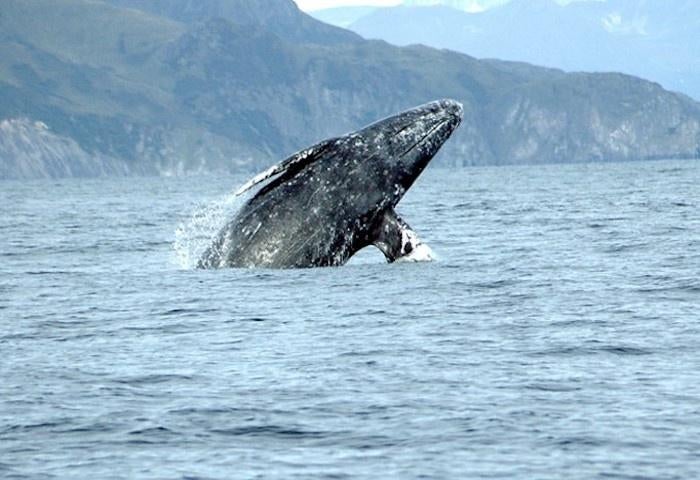Dead 40-foot whale found decomposing on beach likely died by ‘vessel strike’
Gray whale’s injuries said to be consistent with blunt force trauma
A dead gray whale found washed up and decomposing near a beach in the San Francisco Bay Area was likely killed due to blunt force trauma from a “vessel strike”.
The 40-foot long adult female’s decaying remains were identified stuck in a sandbar off the coast of Robert W Crown Memorial State Beach in Alameda, California, on 20 April. The following day, the whale had become dislodged, floating freely with the tide.
The mammal, which is approximately half the size of its cetacean cousin, the blue whale, was towed to waters off Angel Island State Park for a necropsy on 22 April. While the official cause of death was not confirmed due to the decomposition of the creature’s remains, scientists speculated that the whale died after being hit by a ship.
“We continue to document vessel strike injuries in gray whales in San Francisco Bay regardless of other threats to the animals,” Denise Greig, a research scientist for California Academy of Sciences, said in a statement on Tuesday.
“We hope the information we collect can contribute to making the Bay safer for whales, vessels, and people,” Ms Greig added.

Scientists noted that the whale had “full stomach contents and injuries consistent with blunt force trauma,” according to the academy and The Marine Mammal Center, who performed the necropsy on Saturday. The examination was said to have been delayed for several days due to extreme wind conditions and the timing of the tides.
Despite the death, researchers are looking at the incident through a positive lens: it marks the region’s first deceased washed-up whale of the year in the region, the academy said.
Gray whale strandings often rise between March and May, when the cetaceans navigate through the Bay Area on their way to Alaska.
Gray whale populations have dramatically decreased in the past four years, from 20,500 whales in 2019 to 14,526 whales in 2023, according to estimates from the National Oceanic and Atmospheric Administration (NOAA). Researchers have pitted the decline down to several key factors including malnutrition, killer whale predation, entanglement and vessel strike.
In 2019, NOAA declared an Unusual Mortality Event (UME) for gray whales due to an increase in the number of mammals washing ashore. The UME has since been disbanded.
Scientists speculate that it will take approximately a decade for the gray whale population to return to pre-UME levels.
Join our commenting forum
Join thought-provoking conversations, follow other Independent readers and see their replies
Comments